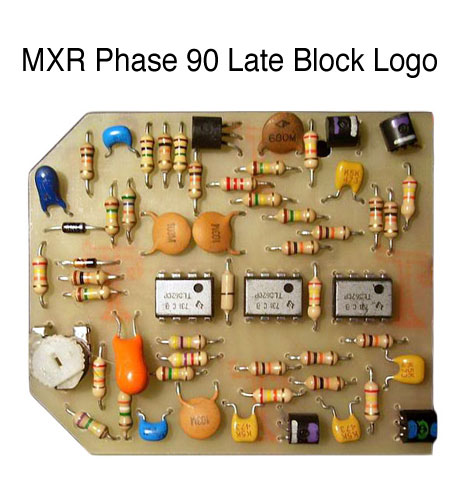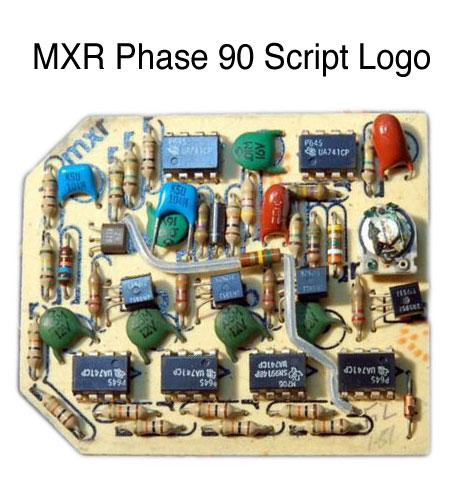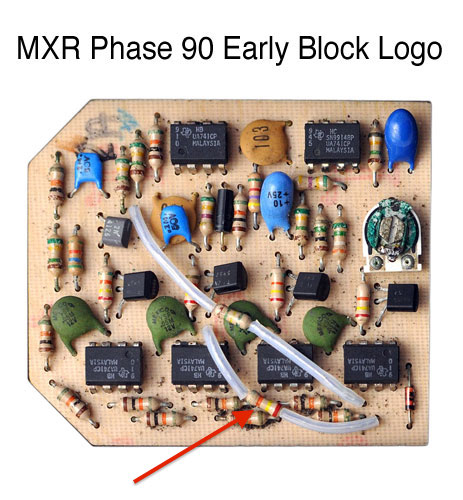Now I’ve seen hundreds of MXR Phase 90s over the years and by far the most common request is for info on the “Script mod.” I’m certainly not an MXR historian but what I can offer is a first hand account of repairing and modifying these pedals. Specifically we’ll be looking at the three oldest versions of the circuit boards and what the key differences are.
First up is the Script Logo Phase 90 which gets its name from the elaborate script font used on the casing. This is the holy grail of Phase 90s and has been in such high demand that MXR reissued the pedal made using the same circuit board as the original one seen below:
The most noticeable difference between this model and the future iterations is this one has six ICs all of which are single op-amps. This likely has little to do with tone and more to do with the availability and cost of ICs at the time. This model was released in 1974 and lasted until 1977.
In 1977 the Phase 90 transition into its Block Logo form which more or less was the same exact pedal except for one resistor. This resistor– which later became known as “R28″– gives a bit of a midrange boost and adds more resonance in the circuit. Below is a circuit board from 1979/1980 with an arrow highlighting the added feedback resistor.
A short time later MXR introduced an updated version of the Phase 90. This version has R28 mounted on the circuit board and also switch from six op-amps to three TL062 dual op-amps. Some other changes include minor value changes throughout the circuit, modified bias circuit for easier calibration, and pre-emphasis and de-emphasis capacitors. Below is a circuit board from the early 1980’s.
 MXR went bankrupt in 1984 and was later purchased by Jim Dunlop. The Phase 90 reissue (M-101) was a modern adaptation of the late block logo circuit with only minor changes to the circuit including better power filtering and using a single TL064 quad op-amp in place of two TL062 ICs. The reissues also have all board mounted components including the potentiometer, jacks, and switch. This makes for easy assembly by the factory but is more expensive to repair and not very good for reliability.
MXR went bankrupt in 1984 and was later purchased by Jim Dunlop. The Phase 90 reissue (M-101) was a modern adaptation of the late block logo circuit with only minor changes to the circuit including better power filtering and using a single TL064 quad op-amp in place of two TL062 ICs. The reissues also have all board mounted components including the potentiometer, jacks, and switch. This makes for easy assembly by the factory but is more expensive to repair and not very good for reliability.
Currently Dunlop has more variations and signature models of the Phase 90 than I could keep track of but they all stem from these original designs (and can all be modified!).


